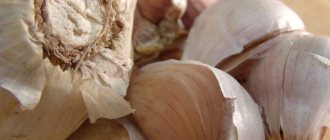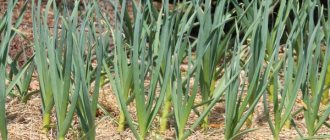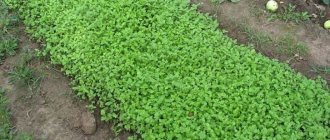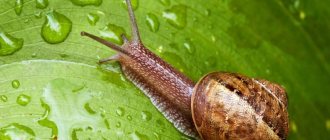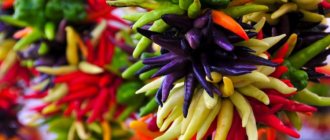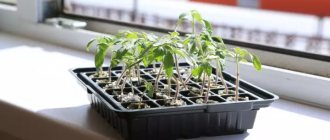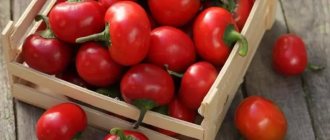What soil and conditions are needed for pepper?
Pepper is a heat-loving crop, but it is successfully grown in open ground by summer residents of the Urals and Siberia. The crops they manage to grow are amazing. Not everyone can boast of the results, but only those who know what kind of soil is needed for a capricious plant and what conditions pepper needs for flowering and fruit set.
The roots of the plant are located close to the surface, most of them are concentrated at a depth of 15-30 cm. In order for the pepper to form a powerful root system before fruiting, it must be planted in soil with a high humus content, low salt content, normal acidity level, optimal pH values 6.0-7.0. You can find out whether the soil in your garden is suitable for growing peppers from the table.
| Soil type | Not really) |
| black soil | Yes |
| podzolic, sod-podzolic | No |
| meadow (chernozem, turf) | Yes |
| salt marshes | No |
| forest gray | Yes |
| peat bog | No |
Peppers growing on soil suitable for its structure and fertility are distinguished by a powerful above-ground and underground part. The bushes grow strong, bloom and bear fruit abundantly. All thanks to strong roots, the yield depends on them.
It is necessary to determine the acidity of the soil for peppers. Litmus paper will do if you don’t want to spend money on a special device. A soil sample should be taken at a depth of 20 cm. Ways to reduce acidity:
- Lime-Gumi is added at 200 g/sq.m. m;
- add ash - 1.5 kg/sq. m;
- use dolomite flour 500 g/sq.m. m.
High-moor peat is added to soil that has an alkaline reaction - 1 kg/sq. m or ammonium sulfate - 40 g/sq. m.
Even on fertile soil, peppers can be harmful: they lose color and ovaries. Such vagaries occur among gardeners who water peppers incorrectly.
- Pepper does not respond well to heavy moisture.
- Due to lack of oxygen, his development slows down.
- Dry soil causes fallen ovaries.
For normal fruiting of peppers, it is necessary to maintain soil moisture of 80-90%.
Advice! Buy a special tester with two functions: measuring humidity and determining acidity. Having such a device, you can count on good harvests.
To ensure that the soil is loose and allows moisture and air to pass through well, when digging, add the following:
- sand in clay and loamy soil;
- peat, humus, compost in sandy soil.
Soil fertility is increased with the help of organic fertilizers: sapropel, compost, humus, rotted sawdust. The main thing to remember is that when growing peppers, do not add fresh manure to the soil!
Tips and tricks
What should you pay attention to when growing crops?
These tips and tricks will help save time and effort:
- Pepper is a heat-loving crop; it should not be planted in cold soil (below 14ºС).
- It is better to water it at the root.
- Use organic fertilizers as top dressing.
- The permissible temperature in the greenhouse is not less than 21ºС and not more than 27ºС.
- The distance between bushes when planting is 0.5-0.7 meters.
- The vegetable bush needs a garter so as not to break from its own weight.
- Fruits harvested in time free the plant from overload.
Is it possible to plant sweet peppers after peppers?
The main principle of crop rotation is the correct alternation of vegetable crops in the garden. Plants of the same species (family) are bad predecessors. Therefore, you should not plant sweet peppers after peppers, even if they are bitter.
Advice! Do not plant sweet and bitter peppers in the same part of the garden. The sweet pepper will become dusty and the fruit will acquire a bitter taste.
Sweet and bitter peppers have the same enemies - spider mites and aphids. Their adults, eggs and larvae remain in the soil; they will certainly begin to reproduce on young sweet pepper seedlings. The diseases of all types of peppers are similar; in the absence of crop rotation, the percentage of diseased bushes increases.
Crop rotation rules and the role of crop rotation
Experienced gardeners should not plant the same plant in a strictly defined place for it. The earth, like any living organism, needs rest.
Compliance with the rules of crop rotation (alternation of crops) leads to a high-quality and abundant harvest even in a small summer cottage. Therefore, you should not ignore them, but, on the contrary, make it a rule to never deviate from them.
Proper rotation of crops in the garden is necessary for a beneficial effect on the structure of the soil and its composition. On average, the interval for planting one plant in a certain place is 2-3 years. But for some vegetables the land requires more rest time: for cabbage - 7 years, for carrots, cucumbers and parsley - 4-5 years.
Do not forget that some plants not only do not deplete the soil, but, on the contrary, enrich it with useful substances.
What to plant after pepper next year?
Any other vegetable crop has good and bad predecessors. Let's figure out which vegetables are best to plant after pepper next season. It is easier to observe crop rotation in a garden, but more difficult in a greenhouse. Limited space makes planning difficult.
In the open ground
It has already been noted that the roots of pepper are not deep. During fruiting, the plant intensively absorbs nutrients from the soil. Next year, instead, you need to plant plants with roots located deeper than 30 cm.
All root vegetables fall under this category of vegetables. They have no common diseases. Therefore, in open ground, after pepper, you can sow:
- beets;
- daikon;
- carrot;
- black radish;
- turnip.
Without damaging the harvest, legumes are planted after the sweet pepper. Beans, lentils, beans and peas restore soil fertility and increase nitrogen levels in it. Legumes, onions, garlic, cabbage and greens are considered neutral plants that can be planted in any order.
In the greenhouse
Toxic substances accumulate in the soil of a greenhouse when peppers are grown. Having reached a certain concentration, they begin to inhibit all vegetables from the nightshade family, including sweet peppers. Its yield in the greenhouse will decrease from year to year. This effect is called soil fatigue.
The range of vegetables grown indoors is small: tomatoes, peppers, eggplants, cucumbers. Except for cucumbers, all crops are of the same type: nightshade. There is no point in alternating them with each other. In a greenhouse, you can organize a 2-year crop rotation according to the following scheme:
- Divide the entire area of the greenhouse into sections, each 1 meter long.
- Plant the first plot with pepper seedlings.
- Sow the second plot with radishes, lettuce, and dill.
- The third section is pepper. The fourth and all subsequent ones alternate in the same way. Even numbers are radishes, beans or other crops, odd numbers are peppers.
Next year, plant radishes and lettuce where the peppers grew, and plant seedlings of peppers in every even-numbered area.
Neutral crops
There are a number of garden plants that are neutral to their predecessors, including pepper, in crop rotation. They just don't get any pros or cons.
- Carrot. Like any root vegetable, carrots can be planted after peppers, tomatoes and other nightshades.
- Radish. This crop germinates without problems after planting pepper. True, the soil must first be thoroughly fertilized.
- Celery. This culture is indifferent to diseases and bacteria left by nightshades.
- Lettuce and spinach. In fact, any leafy, capitate plants can be safely grown in the area where pepper was previously located.
- Spices. These plants are neutral towards any predecessors.
- Turnip. You can also plant after nightshades. But growth requires regular feeding.
You may be interested in:
The main differences between seedlings of sweet and bitter peppers If after planting peppers the names of the varieties are lost, then seedlings of bitter and sweet varieties can be distinguished by their appearance...Read more...
They choose not only favorable predecessors in the garden, but also the most suitable neighbors. Some plants will help protect against insects and bacteria, while others will release beneficial components into the soil.
After what crops can bell pepper be planted?
The crop does not grow well in soil fertilized with fresh manure. But cucumbers, zucchini, and squash love organic matter. They grow well in warm beds filled with fresh manure. After a year, beds of cucumbers, zucchini, squash and pumpkins can be planted with bell peppers. The soil, fertilized in the previous season, nutritious and loose, is ideal for it.
Root vegetables are considered good predecessors. A basic set that is found in any garden: beets, carrots, turnips, radishes. Instead of any of these crops, you can plant bell pepper. It grows well after onions and garlic. They do not have a negative effect on yield.
What is the best time to plant peppers?
Good predecessors:
- cabbage (white, cauliflower);
- cucumbers;
- pumpkin;
- zucchini;
- squash;
- beet;
- carrot;
- greens (basil, dill, parsley, lettuce, spinach);
- legumes.
Green manure is beyond competition. They are considered the best precursors for vegetables from the nightshade family.
Is it possible to plant peppers after cucumbers and vice versa?
Pepper feels great in the beds where cucumbers grew last season. In the fall, it needs to be cleared of plant residues, ash, superphosphate, and potassium nitrate added. In the spring, dig up the ridge, fertilize it with ammonium nitrate, and plant pepper seedlings.
Cucumbers grow poorly after peppers. The soil needs time to recover. It may contain pathogens that are dangerous to cucumber:
- powdery mildew;
- late blight;
- root rot.
Plants - green manure after pepper
Growing green manure will help to effectively restore the fertility of garden soil on which peppers previously grew. They will not only saturate the soil with nutrients, but will also prevent the area from becoming overgrown with weeds.
It was noted that thanks to green manure, the humus content in the soil increases in a short period of time. By using them, you can refuse to subsequently apply purchased mineral fertilizer compounds.
Growing green manure also helps in getting rid of insect pests. Phacelia is grown so that the codling moth, wireworm, and nematode do not dominate the area. Mustard plantings are an effective means of combating mole crickets, May beetles, slugs, and wireworms.
Soil depleted after growing peppers can be improved by planting green manure crops such as mustard (white and yellow), rapeseed, clover, and lupine.
This vegetation can be sown immediately after harvesting from the ridges. In such cases, preference is given to winter grain crops.
To obtain green fertilizer, green manure should be mowed before it blooms. The mown mass does not need to be embedded in the ground. It should be left on the surface to rot.
What can't be planted after pepper?
In addition to peppers, in the garden there are other vegetables from the nightshade family, these include tomatoes, potatoes, eggplants and physalis. They all suffer from the same infections and are loved by the same insects. It is not difficult to conclude that it is not worth alternating these crops.
Following pepper, melons and melons grow poorly:
- pumpkin;
- zucchini;
- squash.
After which vegetables should peppers not be planted?
Peppers should not be planted after potatoes; they should not be planted after tomatoes and eggplants. A bad predecessor for pepper will be garden strawberries (strawberries). Peppers and strawberries can be affected by the same types of fungus.
Why are crop rotation rules needed?
Before you figure out what can be planted after pepper, you should decide why you need to plant plants in different places at all. The thing is that planting some crops on the same territory for two years in a row is undesirable, since this negatively affects the plant itself and the harvest. There are quite a few exceptions to the rules and the same peppers do not apply to them.
The reason why it is necessary to change where a particular crop is grown is that certain plants take a large amount of nutrients from the soil. This particularly applies to cabbage. Even special fertilizers and fertilizing cannot always correct the situation. In other words, the soil must rest for at least 1 year and replenish what was lost.
The second reason is that there may be pests left in the ground from last year that can harm a particular crop. All this should be taken into account when choosing a place to plant plants. In most cases, preference is given to crops with the same level of root system. However, their nutrient preferences should also be taken into account. They don't have to match completely.
This is interesting! Crop rotation is the scientifically based alternation of crops. In the old days, the term “multifield” was used.
Crop rotation table
Best neighbors, what to plant next to peppers?
Mixed beds are popular. The correct choice of vegetable crops is, first of all, disease prevention and protection from pests. It is recommended to plant sharp-smelling plants that produce phytoncides next to pepper:
- onion;
- garlic;
- nasturtium;
- marigold;
- basil;
- lovage;
- coriander.
The planting pattern for peppers in such beds differs from the standard one. When transplanting seedlings, planting holes are placed at intervals of 40-45 cm. The plants listed above are planted between the bushes. You can sow carrots next to the pepper bushes. It will repel insects with the smell of tops.
Favorable neighbors of pepper
The quantity, health and size of fruits depend not only on compliance with the rules of crop rotation, productive variety, sufficient fertilizing and watering, but also on a good neighborhood. A correctly selected garden bed environment naturally neutralizes many of the threats associated with:
- temperature and climatic influence (frost, drafts, accelerated drying of the soil);
- competition for nutrients;
- the possibility of contracting similar diseases;
- infestations by common insect pests.
The best neighbors for peppers are bush beans, onions, herbs, peas, carrots, and cabbage.
Benefits of fruit rotation
Fruit replacement of cultivated crops should be carried out even in cases where the garden has a very small area. This agricultural technique is necessary for many reasons:
- the earth does not have time to be depleted, retaining nutrients;
- moisture is distributed rationally throughout all plantings;
- the risk of spreading diseases is significantly reduced;
- the risk of pest invasion is reduced;
- weed growth becomes less intense;
All these factors prove that plants in a personal plot should be periodically swapped. The optimal period for this is 4 years. The simple technique is quite effective. After all, each garden crop has its own biological characteristics.
Crop rotation summary table for peppers
Even an inexperienced gardener can carry out the correct preliminary layout of the beds without any problems if he uses the popular classification of crops into 4 large groups:
- leafy (salads, greens);
- fruit (tomato, cucumber, cabbage);
- root vegetables (carrots, beets, radishes);
- legumes (peas, beans, soybeans).
The basic rotation algorithm by season is: “fruit -> root crop -> bean -> leaf.”
Then you need to detail the fruit change, based on specific cultivated species. However, the poor succession of related plants with similar diseases, pests and nutrient requirements should not be overlooked.
The crop rotation table for peppers is as follows:
| Predecessors | Followers | Neutral crops | Neighbours |
Spinach, basil, lettuce, dill, parsley, cabbage, cucumbers, marjoram
Beets, carrots, radishes, turnips, radishes, daikon, beans
Head lettuce, onion, garlic, peas, legumes, asparagus
Greens, salads, carrots, beans, cumin, onions, garlic, celery, cilantro
Cucumbers and peppers are grown in the same bed with a minimum interval of 3-4 years, but it is better when this period is 5-6 years.
